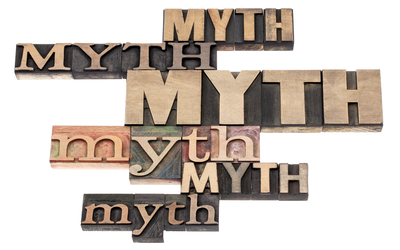There are various theories regarding cardio training and weight loss. Some wellness enthusiasts assert that it’s best for your fat-burning wellness to do cardio at a low intensity, while others recommend doing it on an empty stomach. The problem is that different fitness professionals have different beliefs, and all the conflicting information out there can lead to misconceptions that hamper your progress, and overall wellbeing. Therefore, we turned to certified strength and conditioning specialist Jim Carpentier to debunk some common cardio myths.
1. Long Cardio Workouts at Low Intensity are Best: According to Carpentier, ‘Since your heart rate is not high enough [during low-intensity workouts], your body doesn’t really get a workout from it. Slow/fast workouts (interval training), where you sprint for one minute and then walk for two are best for burning fat. Simply put, a higher heart rate burns more calories. For example, you burn 100 calories in 20 minutes of low-intensity work compared to 160 calories in 10 minutes of high intensity, and you also burn more total fat in less time during a high-intensity workout.’
2. You Don’t Need to Enter Your Weight/Height into Machines: ‘The machine won’t be calibrated with your information, and won’t offer personalised results,’ Carpentier warns. ‘Your actual weight should be taken first thing in the morning, before you have consumed any foods or beverages to tip the scale. Enter that weight — and your height if possible — on the machine and you should be set. If the machine says you burned a total of 150 calories, but you weigh 250 pounds and the machine is calibrated to 180 pounds, this number is likely inaccurate.’
3. A Quick Cardio Workout Burns Fat Cells: Carpentier points out, ‘If your goal is to burn fat, keep in mind that you only start burning fat cells after approximately 20 minutes of a cardio workout. After warming up at low intensity on a treadmill, stationary bike, StairMaster, or stepper for two minutes, up the speed to moderate intensity for 10 minutes, then do two minutes at lower intensity, then five minutes at high intensity, then close with five minutes of moderate intensity, and two minutes of low intensity as a cool down. Total cardio workout time: 26 minutes.’
4. You Should Have an Energy Bar/Drink Before Doing Cardio: If you do this, ‘you only end up burning the calories you just had before hitting your existing fat cells, which is counterproductive if you’re trying to lose weight,’ says Carpentier. ‘Remember that energy bars and drinks were designed with endurance athletes in mind, therefore may have hidden sugars and fat which give them a high calorie content. Instead, have a low-calorie snack about an hour before the workout (allowing enough time for digestion), such as an apple and a half-cup of low-fat yogurt or cottage cheese. You won’t sacrifice energy for the workout, and those minimal calories from the preworkout snack will be burned quickly during a 20- to 30-minute, moderate- to high-intensity cardio session.’
5. You Should Doing Cardio on an Empty Stomach: In The Men’s Health Guide to Peak Conditioning, Ellen Coleman, RD, nutrition consultant with The Sport Clinic in Riverside, California, notes, ‘You don’t have to starve yourself, but it’s wise to avoid eating 45 minutes to an hour before exercising. Even carbohydrates take at least an hour to digest. Fats take even longer: two to four hours. When your body diverts energy to digestion, it’s robbing muscles of power and making your workout less effective.’ Carpentier adds, ‘Don’t starve yourself before a workout and, of equal importance, make sure you are properly hydrated.’
